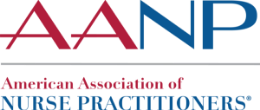Latest Treatment Options for Individualized Type 2 Diabetes Care

New from the American Association of Nurse Practitioners® (AANP): A free, live webinar on overcoming clinical inertia when caring for patients with diabetes.
Diabetes affects more than 34 million people in the U.S., 90% to 95% of whom have Type 2 diabetes. As a chronic disease, uncontrolled diabetes can lead to serious health problems, such as diabetic nephropathy, vision impairment, podiatric complications, diabetic neuropathy, cardiovascular disease (CVD), stroke and more.
Research has shown that intensive glycemic control in patients with Type 2 diabetes decreases both the onset and progression of microvascular complications. Despite this increased understanding — including how intensive glycemic control can lead to decreased risk of myocardial infarction, microalbuminuria and coronary vascular disease — only 52% patients have their glycated hemoglobin (HbA1c) at or below the American Diabetes Association’s recommended level of 7%.
AANP has a number of resources available for nurse practitioners (NPs) who are treating patients with diabetes or prediabetes, including several tools to help patients make informed treatment decisions and maintain glycemic control. Check out AANP’s endocrinology resources.
In addition, AANP has more than a dozen endocrinology-related continuing education (CE) activities in the AANP CE Center, plus free access to evidence-based articles, up-to-date guidelines and other resources about endocrinology at the Journal of the American Association of Nurse Practitioners (JAANP) Resource Center.

